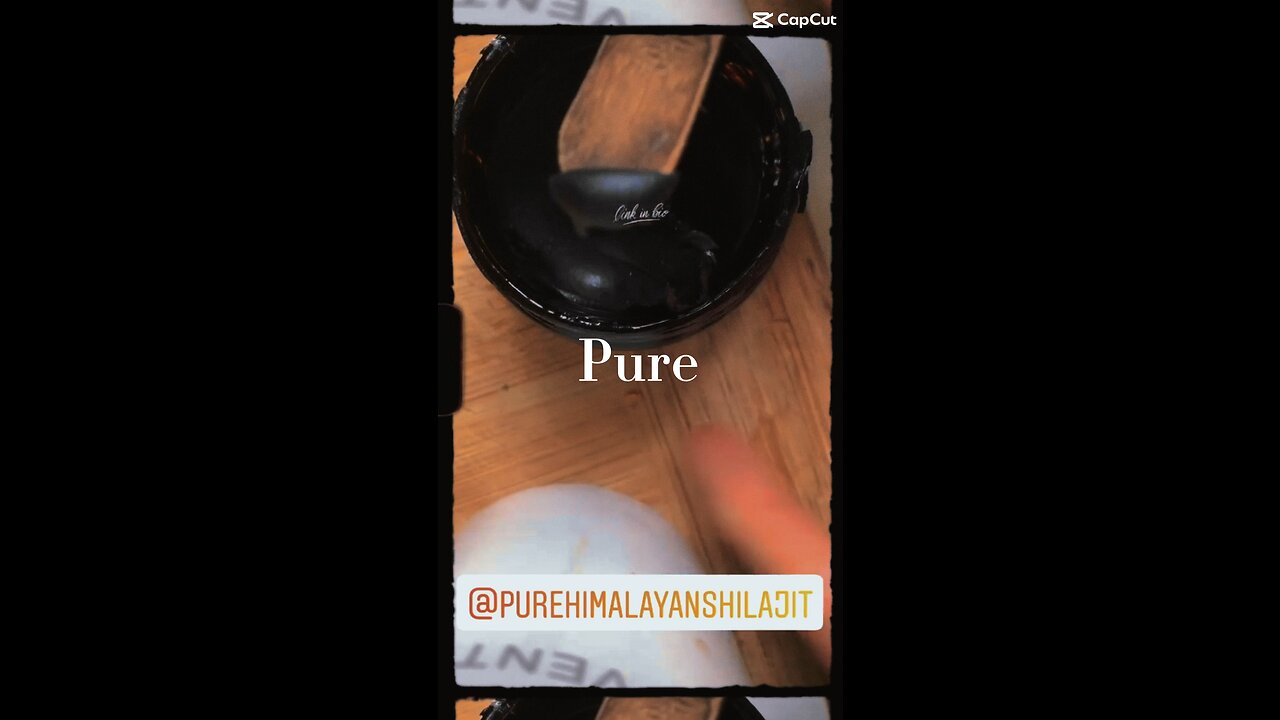Premium Only Content

Pure Himalayan Shilajit
Fulvic acid consists of naturally occurring low and medium molecular-weight compounds, including oxygenated DBPs and acylated DBPs, which exhibit a number of positive biological inhibitory properties that are hard to obtain from any other source.
#Shilajit is a #resin formed during the late Triassic period when geological shifts in the continents caused plants to be trapped under sediment and rock, particularly in the Himalayas, the Caucasus mountains, the Altai Mountains, and the mountains of Gilgit-Baltistan in Pakistan.
Two hundred million years ago, India was part of the super-continent Pangaea. When Pangaea started to break apart, the Indian continental plate drifted northward, colliding with the Eurasian plate some fifty-five million years ago. The collision gave rise to the Himalayas. As the mountains were formed, the lush, tropical forests and vegetation were crushed and compacted under massive boulders; the forests broke down under rock, transforming over time to a nutrient-dense biomass resin that now seeps out of mountain crevasses in warm weather.
Shilajit has been used for over 3,000 years, and is listed in the #Ayurvedic #Sanskrit texts as an important #rasayana food—one that rejuvenates and revitalizes. It translates from Sanskrit to “conqueror of mountains and destroyer of weakness.”
Some scholars maintain that Aristotle vividly described the utility of shilajit 2500 years ago, and that Alexander the Great added shalijit to the rations of his generals and personal guard units to give them strength and endurance on the battlefield.
Shilajit is a nutrient-dense biomass consisting of 60-80% humus (decomposed organic matter) containing fulvic acid, #dibenzo-a-pyrones, and 85 different #ionicminerals.
Fulvic acid contains a broad spectrum of bioavailable nutrients including minerals, #fattyacids, #phenols, and #flavonoids. It also has many different #carbon and phenol-based bonding sites, which are ideal for chelating with ions of macro- and micro- nutrients. When nutrients are bound to fulvic acid, they are more easily absorbed by cells.
✳️link in bio with code✳️
-
 39:11
39:11
Stephen Gardner
2 hours ago🔥Trump TAKES ACTION as Democrats ABANDON Party!
19.1K8 -
 11:37
11:37
Robbi On The Record
12 days agoThe Devil is in the Branding..
38.9K19 -
 LIVE
LIVE
LFA TV
11 hours agoLFA TV ALL DAY STREAM - TUESDAY 9/9/25
1,451 watching -
 LIVE
LIVE
freecastle
5 hours agoTAKE UP YOUR CROSS- The Definition of Insanity | We Have Forgotten How to Love
95 watching -
 1:39:16
1:39:16
The HotSeat
2 hours ago👉 STOP Blaming Each Other — Look at the Media!
13.8K6 -
![[Ep 744] ICE Storm Hits Chicago | Another Innocent Woman Slain in Auburn, AL | Islam Invasion](https://1a-1791.com/video/fww1/9b/s8/1/Y/a/w/g/Yawgz.0kob.1-small-Ep-744-ICE-Storm-Hits-Chica.jpg) LIVE
LIVE
The Nunn Report - w/ Dan Nunn
2 hours ago[Ep 744] ICE Storm Hits Chicago | Another Innocent Woman Slain in Auburn, AL | Islam Invasion
169 watching -
 1:39:20
1:39:20
Russell Brand
6 hours agoMedia Lies & Setups? Tommy Robinson’s Panodrama Watch Along - SF630
127K17 -
 1:56:56
1:56:56
MattMorseTV
5 hours ago $6.06 earned🔴Trump's MASSIVE Press Briefing UPDATE.🔴
24.7K34 -
 1:35:04
1:35:04
Right Side Broadcasting Network
4 hours agoLIVE: Make America Healthy Again Commission Meeting - 9/9/25
31.8K6 -
 1:57:40
1:57:40
The Charlie Kirk Show
5 hours agoWhere Do Rights Come From? + Lions and Scavengers + Midway Blitz | Shapiro, Yoo, McLaughlin | 9.9.25
56.9K23